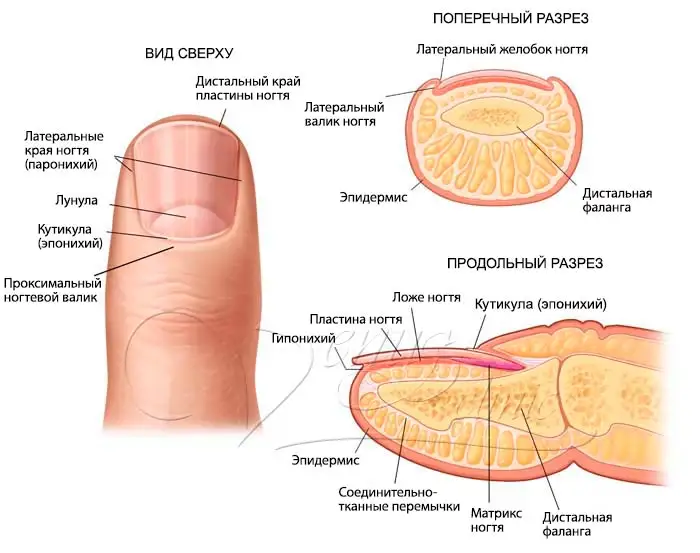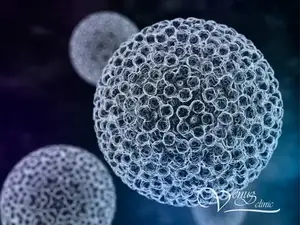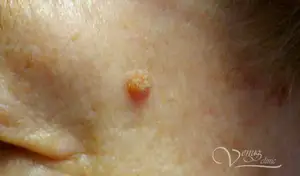
Nail anatomy
Nail is a derivative of the epidermis, like hair, it consists of keratin, cholesterol and trace elements.
The nail consists of a nail plate surrounded by nail skin ridges, the nail plate is located on the nail bed. The nail plate in an adult has a length of 10-15 mm, a width of 10-17 mm and a thickness of 0.3-0.65 mm. Normally, the surface of the nail has a slightly convex shape, smooth. The nail plate is translucent, pink in color due to translucent blood capillaries.
Chemical composition of the nail
Composition of the nail plate:
- keratin, water - 10-13.7%
- cholesterol - 0.12-0.76%
- trace elements: silicon, magnesium, calcium, iron, aluminum, titanium, barium, strontium, manganese, zinc, chromium, lead, tin, copper, nickel, phosphorus, bismuth.
Physiology
Nail growth occurs from the root of the nail (nail matrix). The white half moon that we see is the visible part of the root of the nail, most of the root is hidden under the skin of the base of the nail.
The nail plate consists of a protein - keratin. Keratin of the nail has a dense structure and consists of tightly interconnected keratin plates, like brickwork. The growth rate of nails is maximum in childhood, and after 20 years it begins to gradually slow down. On average, the nail grows 1.5-3 mm per month. Complete renewal of the nail in a healthy person on the hands takes 3-4 months, and on the feet in 9-12 months. Nails speed not the same on different toes - nails grow faster on middle toes than on thumb and pinky.
With age, the rate of nail growth slows down. In an adult, the nail grows by 0.1-0.123 mm per day, while in an elderly person it grows much slower - 0.095 cm per day.
Diseases and pathologies of the nail
The most common diseases and pathologies of the nail plate.
- onychodystrophy - atrophy of the nail plate
- delamination of the nail plate
- nail changes in psoriasis
- nail fungus (onychomycosis)
Read also Laser treatment of nail fungus.







